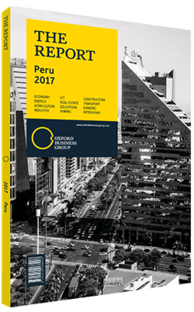Private insurance coverage grows in Peru's increasingly middle-class market
Despite the difficulties posed by a fragmented health care system, opportunities for private health insurance are abundant in Peru. Health services are provided by five main entities: Seguro Integral de Salud; Seguro Social de Salud (EsSalud); two government schemes for the armed forces and the police; and private health insurers, known as entidades prestadoras de salud (EPS).
Key Players
Seguro Integral de Salud is a government-run and funded health insurance scheme, which covers the most vulnerable members of the population; 16.1m people, including the poorest households. EsSalud is the second-largest provider, with a contributory scheme for employees in the formal sector of the economy funded by a payroll tax. EsSalud covers an estimated 26.7% of the population. EPS companies, meanwhile, cater to the medical needs of around 2m people, most of whom subscribe through private health insurance policies. The EPS companies also provide medical services on contract to public sector institutions.
There are now eight main EPS companies, many of which are directly owned by insurance companies. These include Pacífico EPS, Rímac EPS, Mapfre EPS, La Positiva Sanitas and Clínica Ricardo Palma. In early 2017 Clínica Ricardo Palma announced that it was entering a strategic partnership with the largest private health provider in Spain, Quirónsalud.
Private Expansion
Fernando Muñoz-Nájar, a consultant with experience of private pension funds, told OBG that the growth of Peru’s middle class and some of the difficulties experienced by the state-run health insurance schemes have been driving growth in private health insurance. He described EsSalud as a sprawling organisation that was failing to cope with rising medical demand.
Industry studies, including one by the International Labour Organisation, had highlighted the need for reform, particularly in the area of cost control. A survey carried out by EsSalud itself revealed that over 50% of its affiliates were mistrustful of the medical care it provided. “But as of now, no action has been taken on the recommendations of these studies,” said Muñoz-Nájar.
In an attempt to relieve congestion and waiting lists in EsSalud in the 1990s, the government introduced EPS. Employees who wished to opt-in to private health care were allowed to assign up to one-quarter of their 9% payroll tax to an EPS of their choice, which provided a way of bypassing the long delays in treatment through the EsSalud system. Around 2m of Peru’s 4m workers who are currently in formal employment have taken this route. Others opted for private health insurance.
Shifts In Consumption
While the growth of Peru’s middle class has been shifting patterns of consumption and is underpinning the expansion of private health insurance, there are some difficulties that need to be overcome, with a key challenge being limited profitability. For insurers, providing health coverage that involves complex and highcost medical services may be less profitable than a purely financial product, such as annuities.
Nevertheless, health is an important business line for insurers in the country. In 2015 health insurance was the sixth-largest business line for insurance companies, representing 6.96% of total net premium earnings, behind annuities in first place with 13.09%, motor vehicle insurance in second with 12.14% and loan repayment insurance with 8.19%.
In the longer term, the health segment is likely to grow at a dynamic pace. Muñóz-Nájar believes that because of its political sensitivity, reform of the fragmented medical system is likely to be incremental and piecemeal. However, given the internal managerial problems of institutions like EsSalud, the industry seems to be heading in a direction that will involve a bigger role for private health insurance.
You have reached the limit of premium articles you can view for free.
Choose from the options below to purchase print or digital editions of our Reports. You can also purchase a website subscription giving you unlimited access to all of our Reports online for 12 months.
If you have already purchased this Report or have a website subscription, please login to continue.

